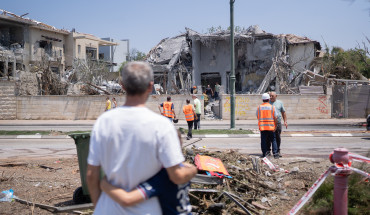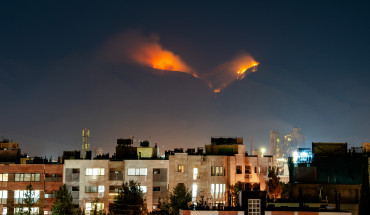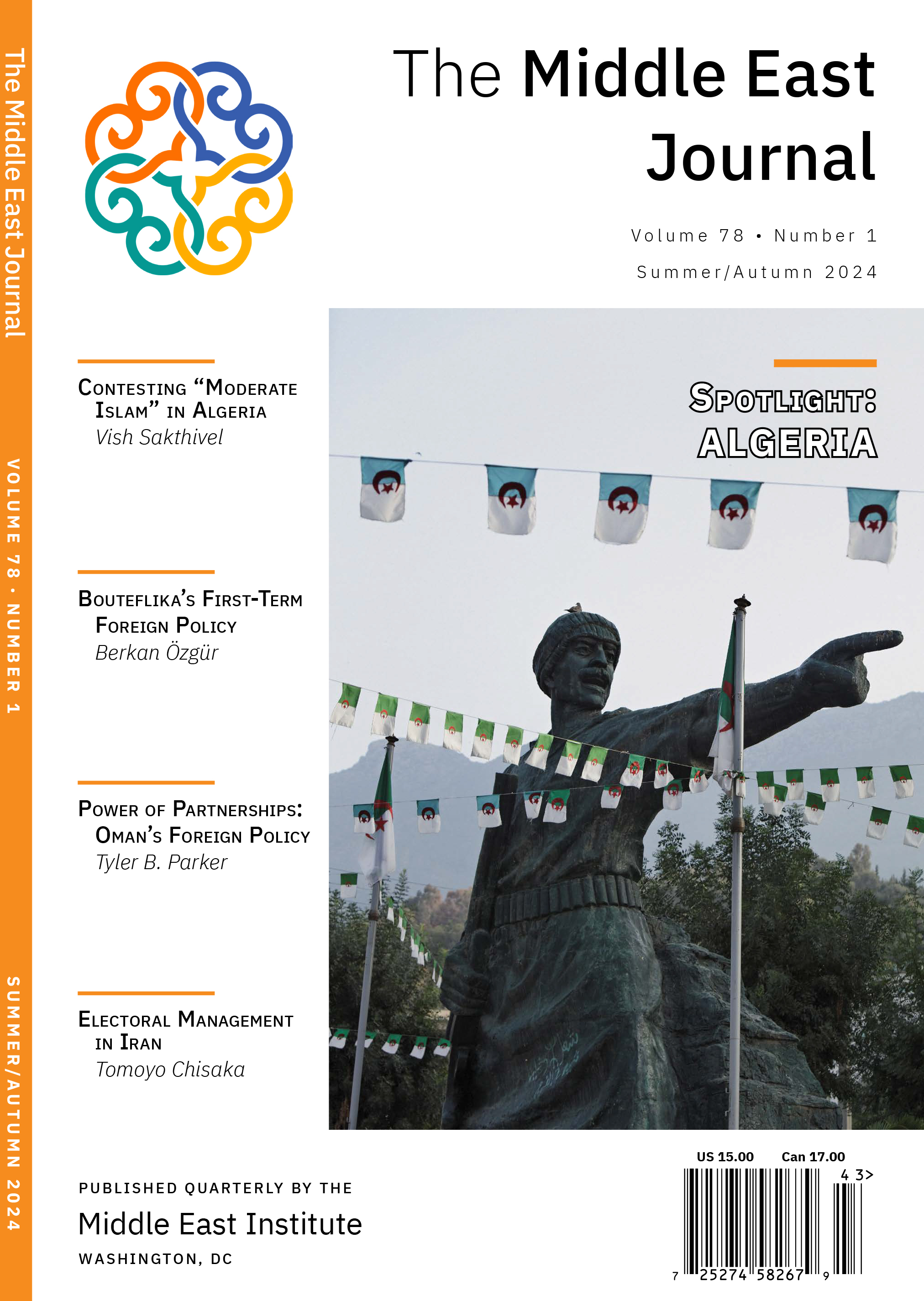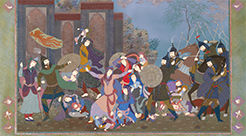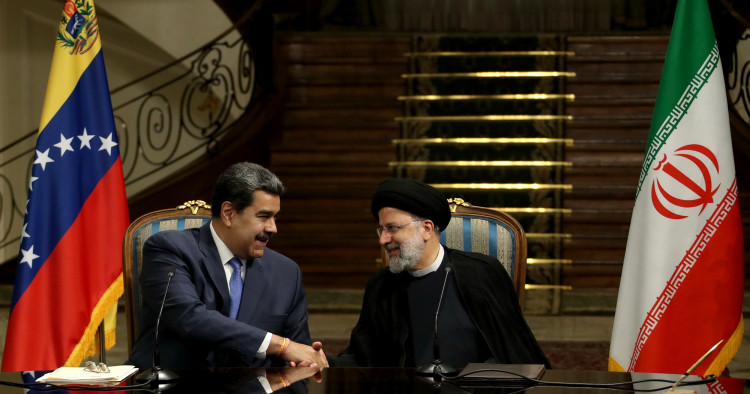On June 11, 2022, Iran’s eighth president, the ultraconservative Ebrahim Raisi (inaugurated on Aug. 3, 2021), met with his Venezuelan counterpart, Nicolás Maduro (in power since 2013), to sign a 20-year bilateral cooperation road map in the fields of energy, defense, agriculture, engineering, tourism, and culture. At the signing ceremony, and as is common during meetings between Iranian and Venezuelan officials, Raisi stated that the agenda laid out in this document was intended to counter and resist U.S. sanctions, pressure, and imperialism. To promote greater energy cooperation as part of the bilateral agreement and to help Venezuela alleviate fuel shortages amidst political and economic crisis, Tehran delivered a second oil tanker, built by the Sadra Company, to Caracas. It also signed a contract with Caracas the previous month worth 110 million euros ($111 million) to repair and restart Venezuela’s smallest oil refinery, called El Palito.
While Raisi was then only in the first year of his presidency, his signing of the road map with Venezuela is consistent with his Southward- and Eastward-leaning foreign policy in the face of persistent U.S. sanctions and pressure. This policy corresponds with the Third Worldist approach of Iran’s sixth president, the hardline Mahmoud Ahmadinejad (2005-2013), under whom Iranian-Venezuelan relations expanded and peaked in parallel with the presidency of Venezuela’s late Commander (El Comandante) Hugo Chávez (1999-2013). But it also conforms to the Venezuela policy of Raisi’s direct predecessor, the centrist Hassan Rouhani (2013-2021), during the latter’s second presidential term. Initially, Rouhani substantively downgraded Tehran-Caracas relations due to his Westward-leaning foreign policy and desire to sign the Joint Comprehensive Plan of Action (JCPOA) on Iran’s nuclear program with the P5+1 powers (the five permanent United Nations Security Council members, the United States, United Kingdom, France, Russia, and China, plus Germany) amid plummeting petroleum prices. However, after the United States unilaterally withdrew from the JCPOA and imposed more sanctions against Iran and Venezuela in 2018, Rouhani reprioritized these relations in both rhetoric and practice. This renewed focus on Venezuela laid the groundwork for the 20-year cooperation plan under Raisi, in spite of the incumbent Iranian president’s efforts to differentiate himself from his more moderate predecessor.
Expansion (1997-2013)
As founding members of the Organization of the Petroleum Exporting Countries (OPEC) in 1960, Iran and Venezuela have maintained political and economic relations that have spanned decades and predate the 1979 Iranian Revolution. During Chávez’s presidency, these relations expanded under Iran’s fifth president, the reformist Mohammad Khatami (1997-2005), even as he pursued détente and rapprochement with the United States and Western Europe; bilateral ties grew even closer under Ahmadinejad. Militarily, and following a U.S. arms embargo against Venezuela, Chávez expressed interest in selling F-16 Fighting Falcons to Iran, while the latter transferred drone technology to Caracas between 2001 and 2012. Diplomatically, the presidents and other high-level officials on both sides held dozens of in-person meetings and phone calls, with Chávez awarding Khatami the Order of the Liberator (Orden del Libertador) in 2005 and Ahmadinejad bestowing the Higher Medal of the Islamic Republic of Iran upon Chávez in 2006. Discursively, Chávez expressed support for Iran’s nuclear program and claimed it exclusively existed for civilian or peaceful purposes, as the U.N. Security Council passed a series of resolutions against it. While they came from different countries and cultures, Ahmadinejad and Chávez closely identified with one another as authoritarian populists and ardent anti-imperialists. They both presided over pariah petrostates and aspired to create an “axis of unity” and a “new world order” against the United States.
Economically, Tehran and Caracas signed hundreds of bilateral agreements in the areas of energy and finance, trade and commerce, agriculture and industry, infrastructure and construction, science and technology, and education and culture. Under Ahmadinejad and Chávez, and compared with Khatami, bilateral trade between Iran and Venezuela significantly increased from an annual average of 0.03% to 0.09% of Iran’s total trade, with higher trade surpluses. By 2008, Iran’s industrial projects in Venezuela were valued at about $4 billion and included an ammunition factory, a car assembly plant, and a cement factory. However, these projects and others were delayed or unimplemented due to heightened U.S. sanctions, low foreign and domestic investment, and rampant government mismanagement and corruption. Between 2007 and 2010, Iran Air operated flights between Tehran and Caracas, with a layover in Damascus, and both countries planned to open a joint university that taught socialist principles. After Venezuela sent two oil tankers to Iran in May 2011, the United States intensified sanctions against the energy sectors of both countries and passed the Countering Iran in the Western Hemisphere Act of 2012, which called on “a comprehensive strategy to counter Iran’s growing hostile presence in the Western Hemisphere.” This pressure caused or correlated with a precipitous drop in Iranian exports to Venezuela, from more than $65 million in 2012 to around $19 million in 2013.
Vacillation (2013-2021)
Between his first and second term, Rouhani’s Venezuela policy vacillated between substantive disengagement and intensive rapprochement. During his first term, and as he did with other allies and partners in the Global South, Rouhani engaged with Venezuela more at a symbolic than a substantive level. This was primarily due to his Westward-leaning foreign policy and prioritization of the JCPOA to reduce Iran’s international isolation and economic sanctions. Between 2013 and 2017, he met 13 times in person or by phone with Maduro and other high-level Venezuelan officials, including the foreign minister, petroleum minister, and speaker of parliament, but almost always did so in Tehran. During these meetings and calls, and to avoid antagonizing the United States and jeopardizing the JCPOA, Rouhani spoke less about anti-imperialism and independence, and more about strengthening political and economic relations between both sides along with stabilizing slumping oil markets as fellow OPEC members. As with other countries in the Global South and due to his Westward-leaning orientation, disparities existed between Rouhani’s rhetoric and practice toward Venezuela, particularly in the leadup to the signing of the Iran nuclear deal. For example, on June 26, 2015, Rouhani and Maduro signed a bilateral agreement on investment and supply that was delayed or unimplemented, presumably because it happened one month before the agreement on the JCPOA. Rouhani’s reticence during his first term to engage too closely with Venezuela and alienate the United States was also reflected in Iran’s negligible trade with its South American partner. Between 2014 and 2016, bilateral trade comprised an annual average of 0.01% of Iran’s total trade, compared with 0.09% under Ahmadinejad, and reached its lowest levels since the period of the Khatami administration, during the late 1990s and early 2000s.
But in Rouhani’s second term, and particularly after the U.S. withdrew from the JCPOA and increased its sanctions against Iran and Venezuela in 2018, his policies aligned more closely with his rhetoric, and he adopted a more anti-imperialist and defiant tone. During and after that year, Rouhani did not just speak with Maduro and other Venezuelan officials about reinforcing bilateral relations and raising oil prices. They also notably discussed resisting U.S. imperialism, intervention, aggression, pressure, plots and conspiracies, threats, and sanctions. Between 2018 and 2019, Rouhani congratulated Maduro on his reelection and expressed support for his government, which the United States, other Western countries, and several Latin American states refused to recognize. Beyond rhetoric, and like what Chávez had done during Ahmadinejad’s presidency, Rouhani’s government defied U.S. sanctions and threats by sending five oil tankers with approximately 60 million gallons of refined gasoline to Caracas to alleviate severe shortages in May 2020. Two months later, in July, and to further circumvent U.S. sanctions and boost Iranian exports to Venezuela, the Iranian company Etka, which is affiliated with the Ministry of Defense, opened a supermarket called Megasis in Caracas that sold products imported from Iran. In November, one month after the U.N. arms embargo against Iran had expired, Tehran transferred to Venezuela the technology to produce reconnaissance and combat drones. The transfer was approved by Supreme Leader Ali Khamenei, the commander-in-chief of the Iranian armed forces, highlighting a key difference between Iran’s bifurcated political system and Venezuela’s single executive one.
The present and future (2021-present)
As much as Raisi has wanted to differentiate himself from his predecessor, his Venezuela policy has so far closely resembled that of Rouhani during his second term in both rhetoric and practice. In meetings and calls with Maduro and other officials from Caracas — and like Ahmadinejad throughout his presidency and Rouhani in his second term — Raisi regularly discusses deepening diplomatic and commercial ties, as well as overcoming U.S. threats, sanctions, pressure, imperialism, and hegemony. Less than a year into President Raisi’s first term, these meetings and statements culminated with him and Maduro signing the 20-year bilateral cooperation road map. As part of the agreement, and as Rouhani before him had done, Raisi delivered an oil tanker to Venezuela, along with committing to repair one Venezuelan refinery to alleviate the country’s ongoing fuel shortages.
Diplomatically, Iranian-Venezuelan relations will likely further intensify under Raisi given that, less than one year in office, he already had five meetings and calls with Maduro and the latter’s vice president and foreign minister, compared with 19 such points of contact during both of Rouhani’s four-year terms. And like Rouhani, Raisi will presumably continue meeting with top Venezuelan officials in Tehran and Caracas as well as on the sidelines of multilateral forums, including the United Nations General Assembly (UNGA), Non-Aligned Movement (NAM), Organization of Islamic Cooperation (OIC), Gas Exporting Countries Forum (GECF), and OPEC. That said, Iranian relations with Venezuela may be on the verge of undergoing a role reversal. Whereas Rouhani was reluctant to engage too closely with Venezuela before signing the JCPOA in 2015, Maduro may now hold a similar position toward Iran. Since March 2022, Venezuela’s government has been negotiating with the United States for sanctions relief to bring Venezuelan oil back on the global market and reduce high petroleum prices. Nevertheless, Caracas may be wary of entering into a deal with Washington due to the latter’s withdrawal from the 2015 Iran nuclear deal and loss of credibility to abide by its commitments — even if the prospects of reviving the JCPOA have not been completely ruled out.
Militarily, Iran will likely continue to help Venezuela produce and operate drones, especially considering Tehran’s ambitions to expand its exports of the technology to countries around the world, like Ethiopia and Russia. Economically, and based on the recently signed 20-year cooperation plan with Venezuela, Iran will presumably seek to expand bilateral relations in various sectors. Notably, Raisi’s government has already resumed direct flights between Tehran and Caracas to bolster tourism and will likely continue helping Venezuela alleviate the latter’s fuel shortages. Moreover, as part of the June 2022 roadmap, and as with countries in Sub-Saharan Africa and elsewhere in the Global South, Iran has pursued extraterritorial cultivation and food production in Venezuela. The aims are to reduce operating costs, promote food security, meet rising food consumption and import demand, and compensate for water and land shortages due to population growth and climate change — all issues that were exacerbated by the protracted COVID-19 pandemic, supply chain challenges, and the Ukraine war.
In the end and as in the past, rising petroleum prices notwithstanding, sizeable trade and investment between Iran and Venezuela will continue to be constrained by their status as middle-income countries, resource limitations, demand for foreign direct investment, the enduring and tightening sanctions against their economies, and their increasing sociopolitical and economic instability at home. For this trend to be mitigated or reversed, and regardless of their slogans related to independence and self-sufficiency, both long-distance partners will have to either secure sanctions relief from the United States or obtain greater backing from its core competitors, China and Russia. For this reason and to this end, Tehran also signed a 25-year cooperation agreement with Beijing last year and may soon do so with Moscow as well — even if the details of such agreements remain undisclosed, much like the road map with Caracas.
Time will tell whether Iran and Venezuela can count on China and Russia for stronger support militarily, diplomatically, and economically, in lieu of détente and rapprochement with the United States. If not, then Iran and Venezuela — two middling powers in an increasingly multipolar world — will remain subjected to the whims of Beijing, Moscow, and Washington, perceived and treated by them as regional pawns in a larger geopolitical game.
Eric Lob is an associate professor in the Department of Politics and International Relations at Florida International University and a non-resident scholar with MEI’s Iran Program. The views expressed in this piece are his own.
Photo by Iranian Presidency / Handout/Anadolu Agency via Getty Images
The Middle East Institute (MEI) is an independent, non-partisan, non-for-profit, educational organization. It does not engage in advocacy and its scholars’ opinions are their own. MEI welcomes financial donations, but retains sole editorial control over its work and its publications reflect only the authors’ views. For a listing of MEI donors, please click here.






